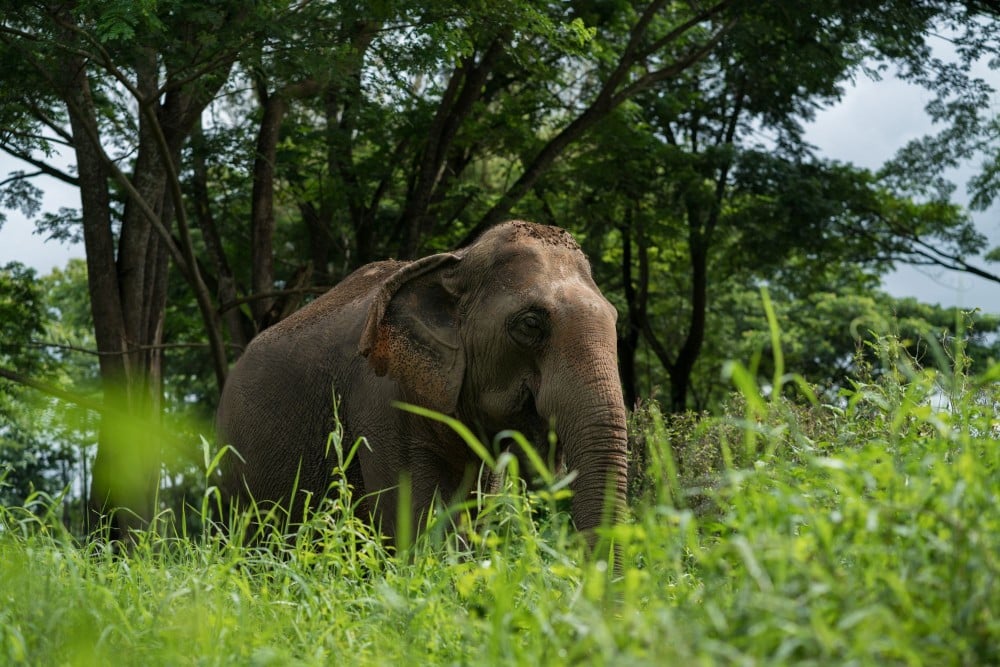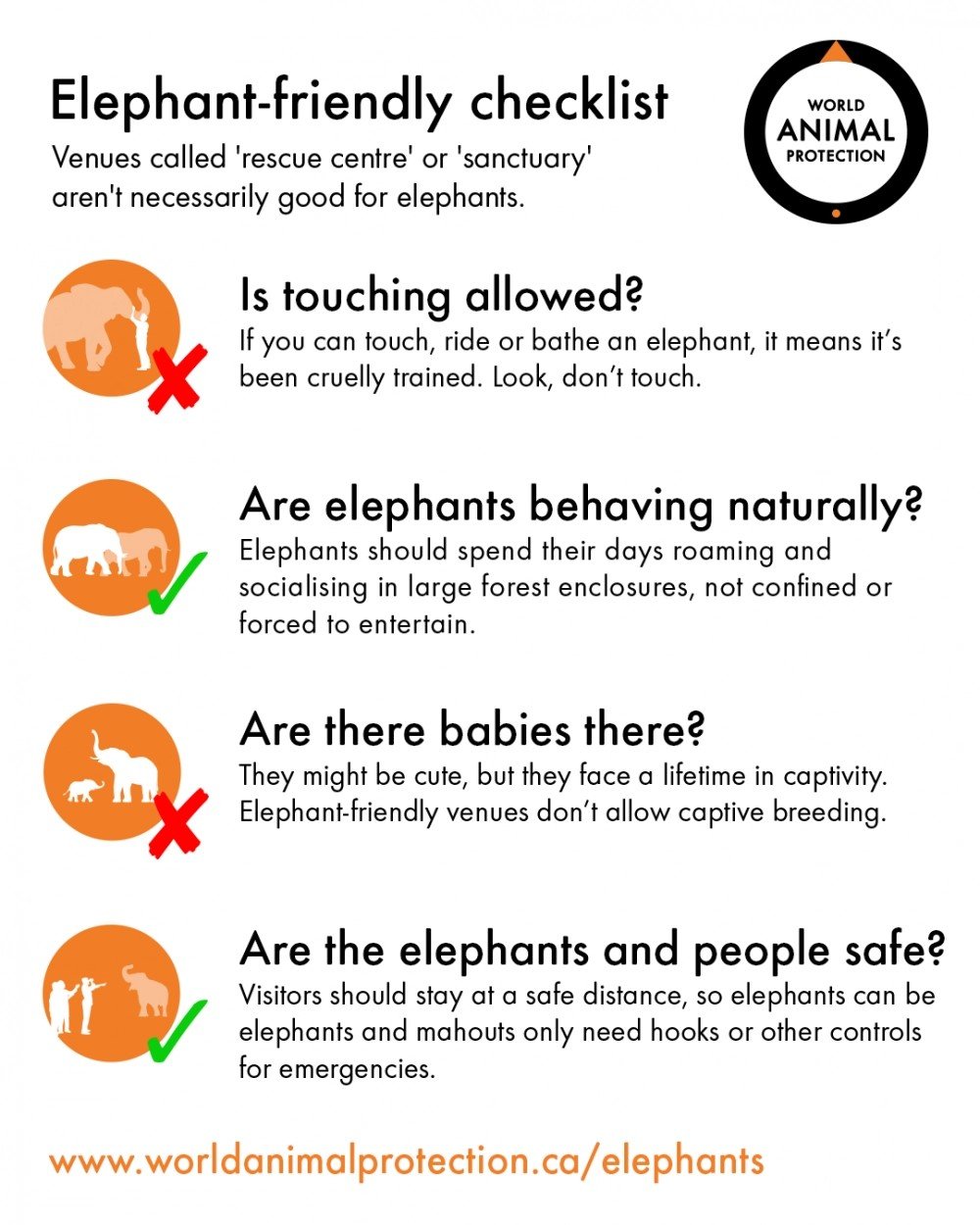
Elephant friendly tourist guide
Right now, thousands of elephants around the world are suffering in the name of tourism. But it doesn’t have to be this way.
You have the power to change the world for elephants.
The best place to see elephants is in the wild. But if you’re going to visit an elephant venue, make sure it allows elephants to be elephants, while educating visitors on their complex needs.
Share your experience, leave reviews on sites like TripAdvisor, and be part of the movement to create a better future for elephants.
What's in a name?
A venue may call itself a sanctuary, rescue centre or retirement home for elephants, but don’t assume this means it’s higher welfare. Do your research before booking and use our guide below to avoid being misled.
Looking to book right away?
Take a look at our list of elephant-friendly venues in Thailand, Cambodia and Nepal.
Is touching allowed?
Only visit venues where you can look, not touch.
Elephants are wild animals that belong in the wild. If a venue allows you to get close enough to ride, bath or touch them, it’s because they’ve been cruelly trained.
Are the elephants behaving like elephants?
If the elephants in a venue are not allowed to freely move and express natural behaviour, it’s not the place for you.
Elephants in the wild spend their days roaming long distances, grazing and socializing with other elephants, not confined in small enclosures or forced to perform.
Are there baby elephants there?
They might be cute, but if you can see or touch a baby elephant, especially without its mum, then the venue is not elephant-friendly.
Baby elephants are tourist magnets, but true elephant-friendly venues shouldn’t allow breeding. You shouldn’t be seeing young elephants, except for orphanages where babies are rescued from the wild.
Are the elephants and people safe?
Elephants should always be treated with kindness and respect, and hooks shouldn’t be used unless in a real emergency.
Being wild animals, captive elephants can be unpredictable and dangerous, especially if they're being crowded. Many tourists and mahouts are injured and killed each year. Even in elephant-friendly venues you’ll often see mahouts accompanying elephants at a distance, to keep everyone safe.
Spreading the word
Help make life better for elephants by sharing our elephant friendly checklist on social media:

Elephant-friendly venues
Even with all the right information, it can still be difficult to find the right elephant-friendly venue
To make your planning easier, we’ve created a list of some venues we know are doing the right thing for elephants.
Thailand:
- ChangChill
- Boon Lott's Elephant Sanctuary
- Burm and Emily's Elephant Sanctuary
- Elephant Valley Thailand
- Following Giants
- Global Vision International
- Kindred Spirit Elephant Sanctuary
- Mahouts Elephant Foundation
- Somboon Legacy Foundation
Cambodia:
Nepal:
ChangChill: better for elephants, better for tourism
We spent several years helping one venue, ChangChill, to become truly elephant-friendly
With our support, that of the TUI Care Foundations, and the encouragement from some of the world’s leading travel companies, ChangChill is now a place where elephants can be elephants, and tourists can have the honour of witnessing that.